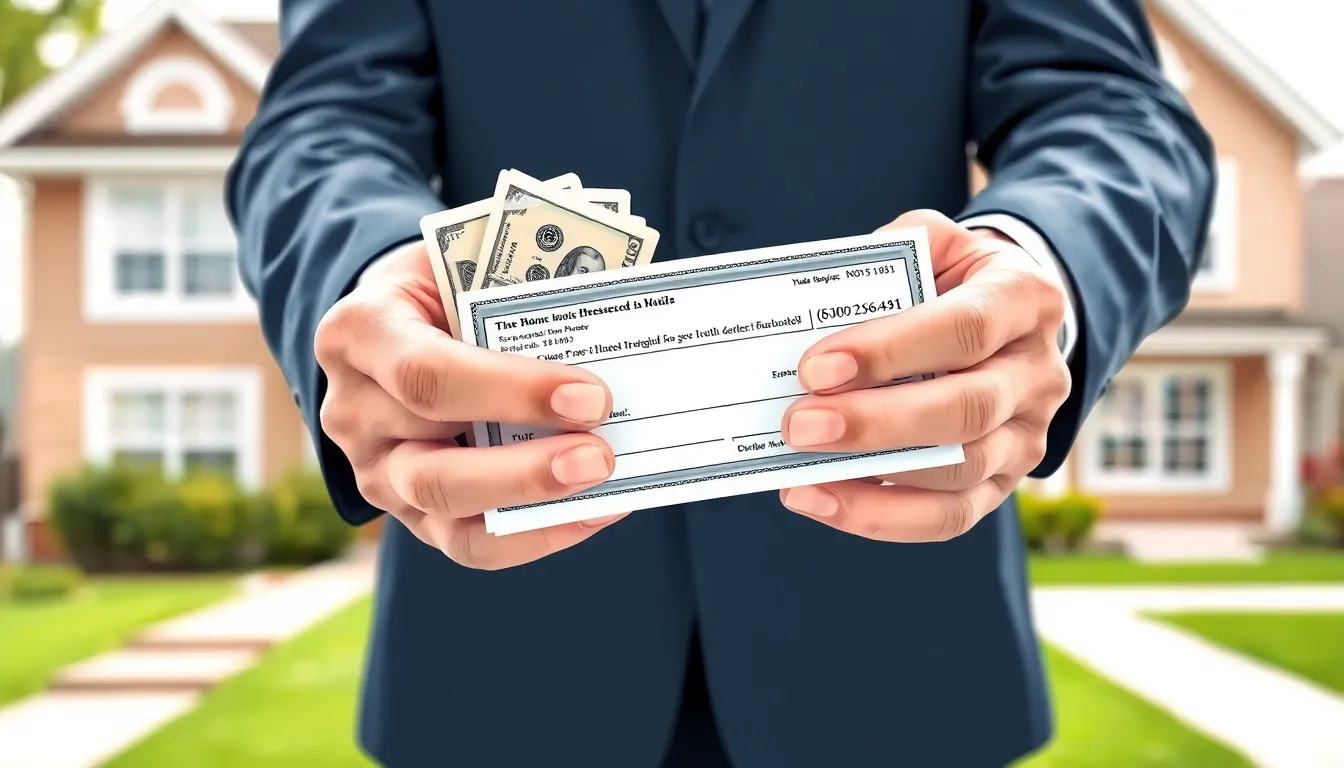Rent day can feel like a mini heart attack, but choosing the right payment method shouldn’t add to the stress. With a smorgasbord of options available, from traditional checks to high-tech apps, there’s no need to break a sweat—or a bank. Navigating these choices can be as easy as pie, if pie were made of money and a sprinkle of convenience.
Table of Contents
ToggleOverview of Rent Payment Methods
Rent payment methods vary widely, allowing tenants to choose options that fit their lifestyles and preferences. Traditional checks remain popular, offering a tangible and secure way to make payments. Many landlords accept electronic bank transfers, which provide quick and automatic transactions, reducing the need for physical exchanges.
Credit and debit cards offer additional convenience, enabling tenants to pay rent quickly through online portals. Mobile payment apps like Venmo and PayPal facilitate seamless transactions, benefiting those who prefer digital solutions. Some landlords provide their own payment platforms, streamlining the process and often including reminders for upcoming payments.
In addition, money orders provide a secure alternative for tenants without bank accounts. They serve as verified payments, minimizing risks of bounced checks. Cryptocurrency usage is on the rise, creating new opportunities for innovative payment methods.
Various payment methods may come with different fees or processing times, influencing the tenant’s choice. Tenants should consider factors like security, convenience, and available support when selecting a method. Each option has its pros and cons, catering to diverse renter needs and preferences.
Traditional Payment Methods

Traditional payment methods remain popular among renters due to their familiar nature and established security. While options exist in the digital realm, many still rely on age-old payment methods like cash and checks.
Cash Payments
Cash payments provide immediate availability and ensure no transaction fees. Many landlords accept cash, offering tenants a straightforward method to complete rent payments directly. When using cash, obtaining a receipt offers proof of payment, securing both parties in a transaction. It’s essential to handle cash carefully, as it can be lost or stolen easily. Choosing cash becomes less convenient for those who cannot meet landlords in person frequently.
Check Payments
Check payments offer a tangible way to complete rent transactions, giving renters a documented trail. Landlords often appreciate receiving checks for their reliability and security. Writing a check allows tenants to have control over the payment date, ensuring they can manage their finances effectively. Sending checks via mail requires ensuring timely delivery and keeping copies for personal records. Renters should remain aware of possible bank fees associated with insufficient funds that could complicate their obligations.
Digital Payment Methods
Digital payment methods offer convenience and efficiency for renters. These options streamline transactions and often provide additional features that enhance the renting experience.
Online Bank Transfers
Online bank transfers stand out for their security and speed. Many tenants prefer this method as funds transfer directly between bank accounts. Automatic payments ensure timely rent delivery, reducing the risk of late fees. Numerous banks allow users to set up recurring payments, making monthly transactions hassle-free. Additionally, renters receive immediate confirmation, which helps in tracking payments. It’s essential for tenants to verify potential fees linked to the transfer, ensuring the method remains economical.
Payment Apps and Services
Payment apps and services simplify the rent payment process. Platforms like PayPal, Venmo, and Zelle enable quick money transfers with just a few taps. These apps eliminate the need for checks or cash, making transactions both easy and fast. Many landlords accept these services, offering flexibility in payment options. Security features like two-factor authentication add an extra layer of protection. Tenants should be aware, however, that using these apps might incur transaction fees, affecting the overall cost of the payment.
Pros and Cons of Each Method
Understanding the advantages and disadvantages of various rent payment methods helps tenants make informed decisions. Each option carries unique benefits and challenges.
Advantages of Digital Payments
Digital payments streamline the rent process significantly. Instant transactions eliminate delays, allowing landlords to confirm payments quickly. Automatic features facilitate recurring payments, reducing the risk of late fees. Tenants may also enjoy secure transactions through encryption. In addition, payment notifications keep renters updated on their payment status. Accessibility stands out, as users can manage their accounts from smartphones or computers. Payment apps, like Venmo or PayPal, often boast user-friendly interfaces, making it easier for renters to complete their transactions.
Disadvantages of Traditional Methods
Traditional payment methods do have several drawbacks. Cash payments present risks due to potential loss or theft. Check payments require timely mailing, which can delay processing. Bank fees for insufficient funds can catch some renters off guard. Manual tracking of payment deadlines necessitates careful attention to avoid late fees. Tenants without digital access may find it challenging to manage their payments efficiently. Lastly, the lack of immediate confirmation in traditional methods can lead to uncertainties regarding payment status.
Tips for Choosing the Best Rent Payment Method
Selecting the optimal rent payment method involves analyzing several factors, including convenience, security, and individual preferences. Understanding these elements helps tenants streamline their payment processes.
Evaluating Convenience and Security
Convenience plays a crucial role in choosing a payment method. Tenants should look for options that allow for easy access and minimal effort. Digital payments offer speed, enabling instant transactions that help avoid late fees. Security also matters greatly; methods like bank transfers and payment apps typically provide built-in encryption features. Traditional methods carry risks, such as cash loss or check delays. Evaluating both convenience and security ensures that tenants feel confident in their payment choice while minimizing stress.
Considering Tenant and Landlord Preferences
Tenant and landlord preferences greatly influence the choice of payment method. Some landlords prefer secure, documented transactions, while others may advocate for digital methods for their ease of use. Discussing these preferences upfront fosters a smoother payment process. While many tenants may lean toward electronic options due to their convenience, landlords like having a clear paper trail through checks. Understanding these differing viewpoints helps renters align their payment strategy with landlord expectations, leading to better communication and fewer issues.
Navigating rent payment methods can significantly reduce stress associated with rent day. With options ranging from traditional checks to cutting-edge digital apps, renters have the tools to choose what best fits their needs. Each method offers unique advantages and potential drawbacks, making it essential for tenants to evaluate their priorities.
By considering factors like security convenience and fees, renters can make informed decisions that enhance their experience. Open communication with landlords about preferred payment methods can also lead to smoother transactions. Ultimately understanding these options empowers tenants to manage their rent payments effectively and confidently.





